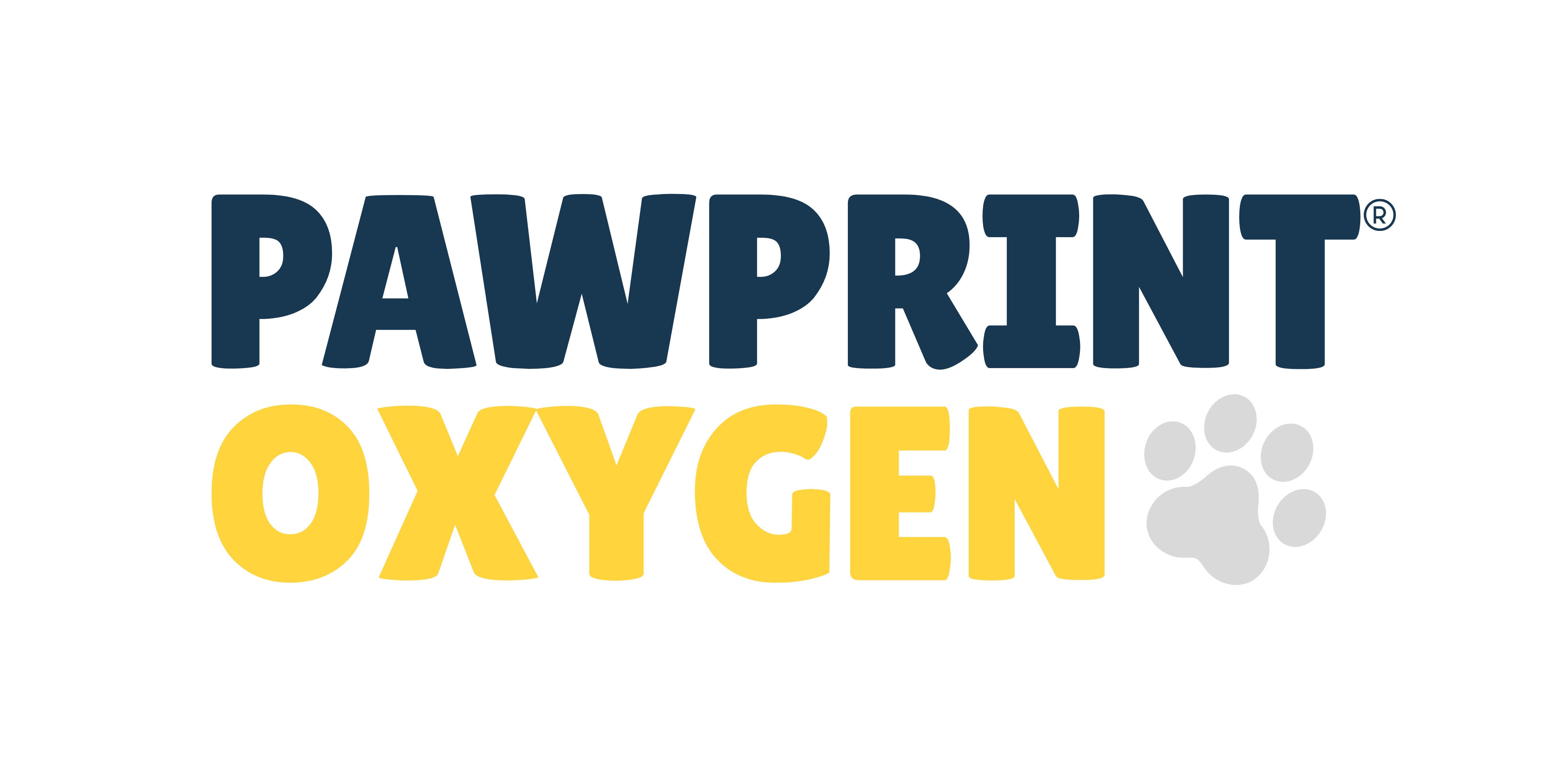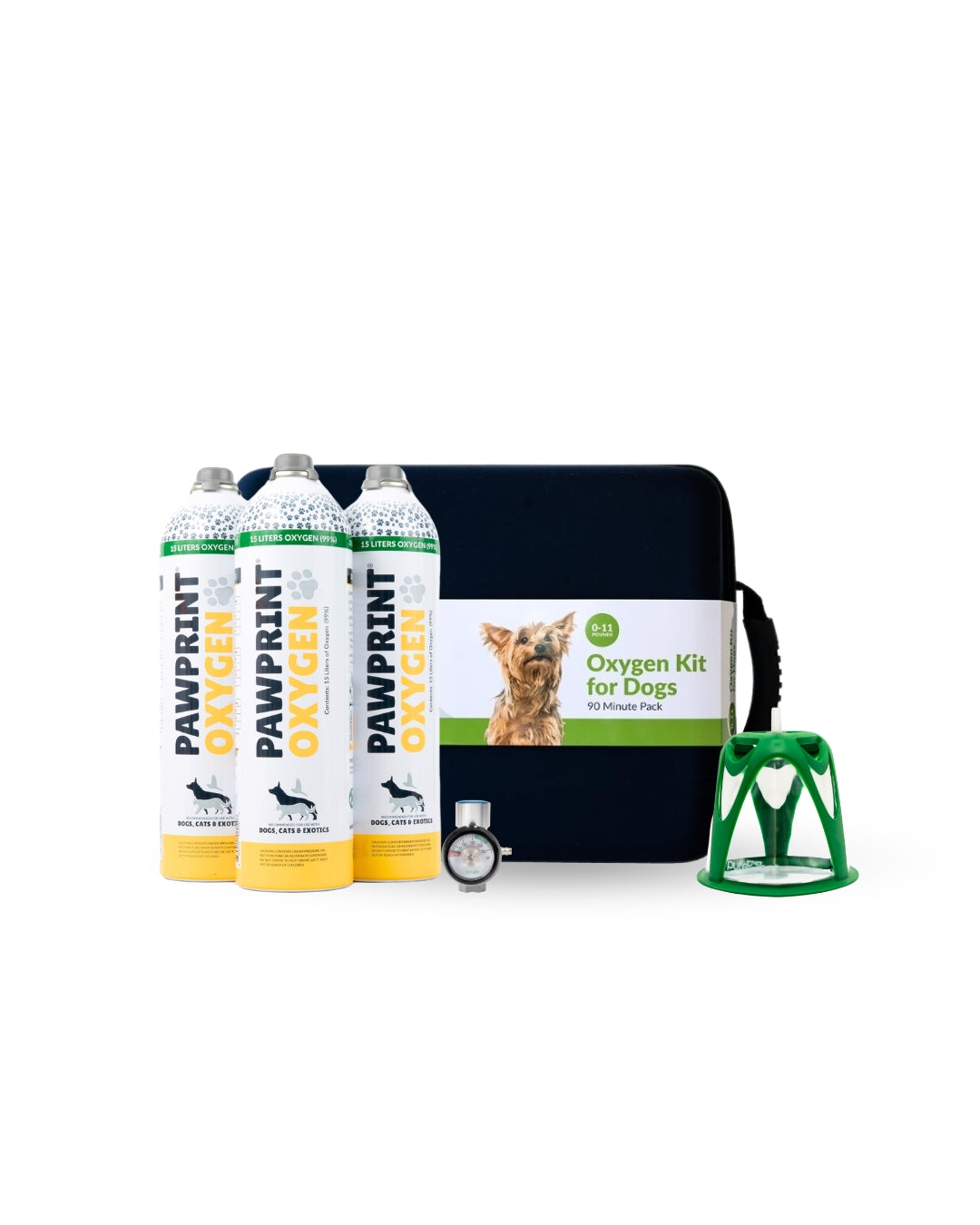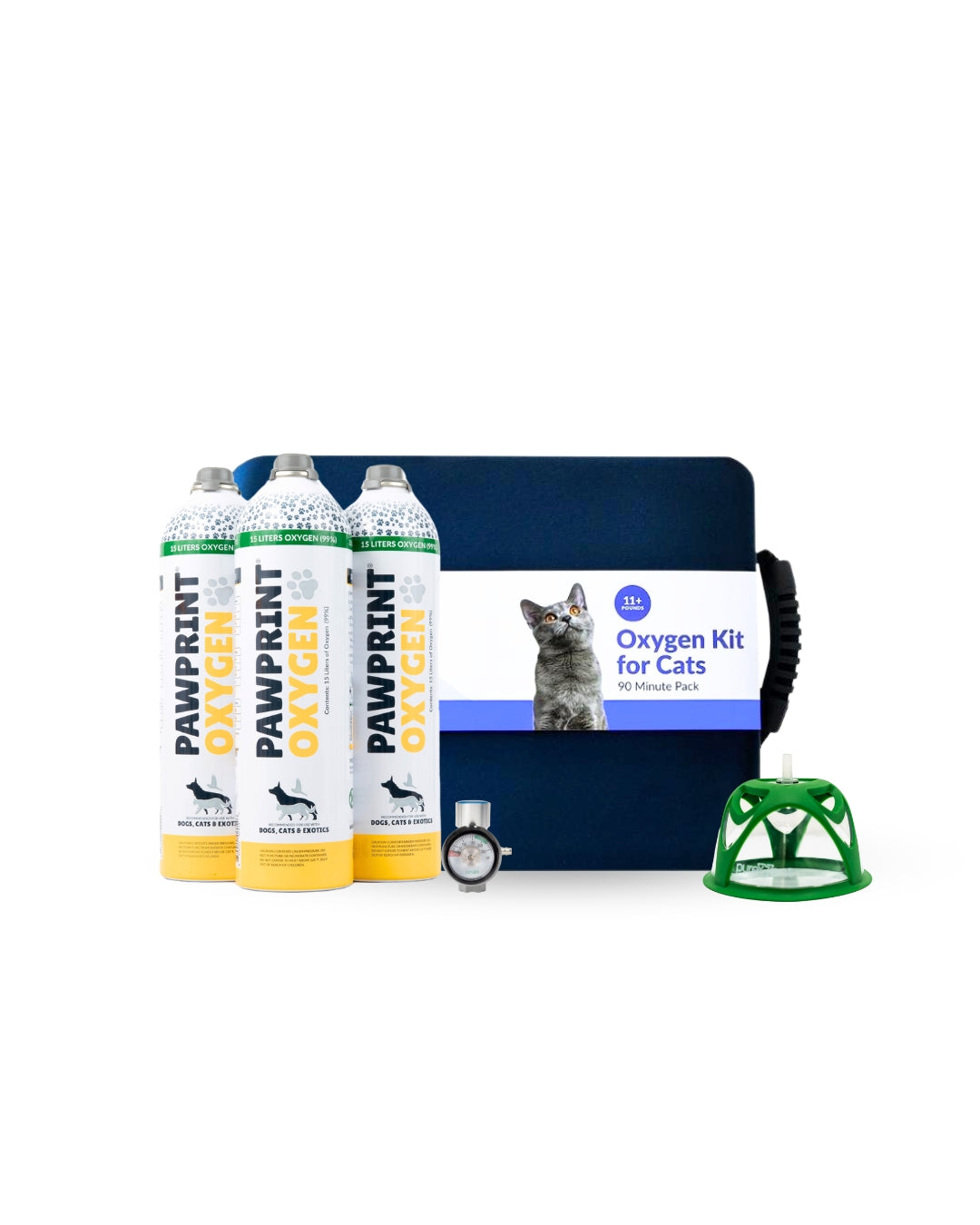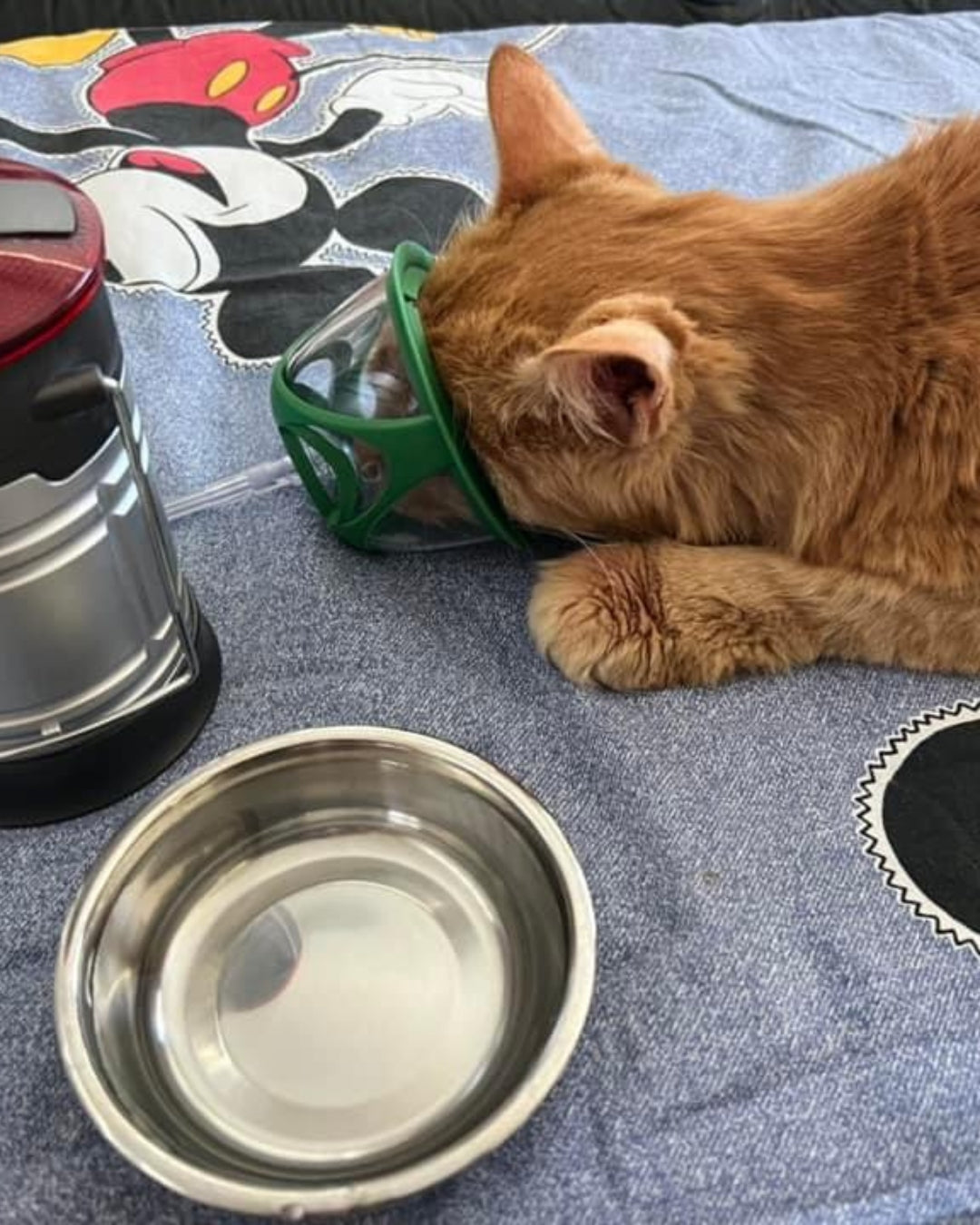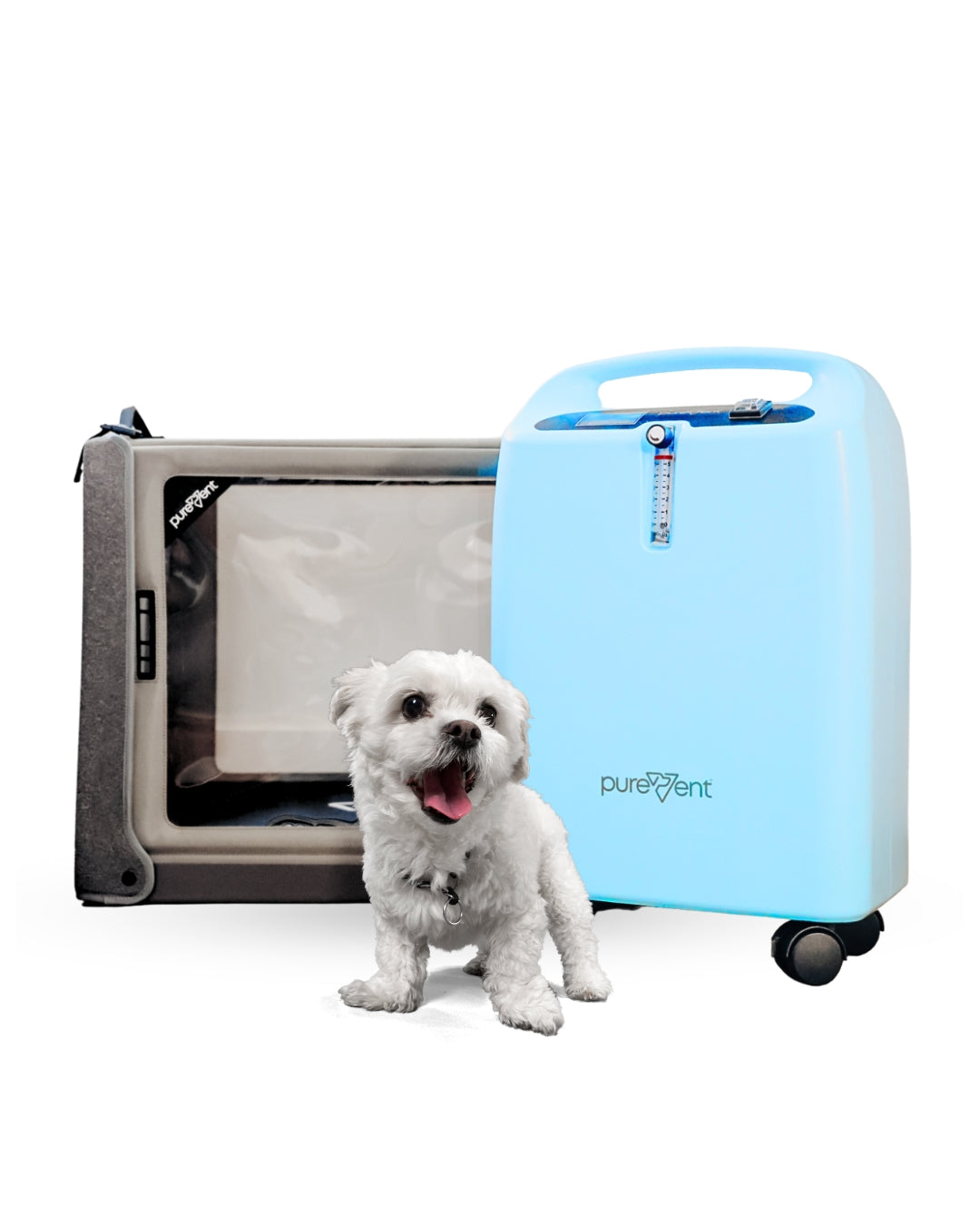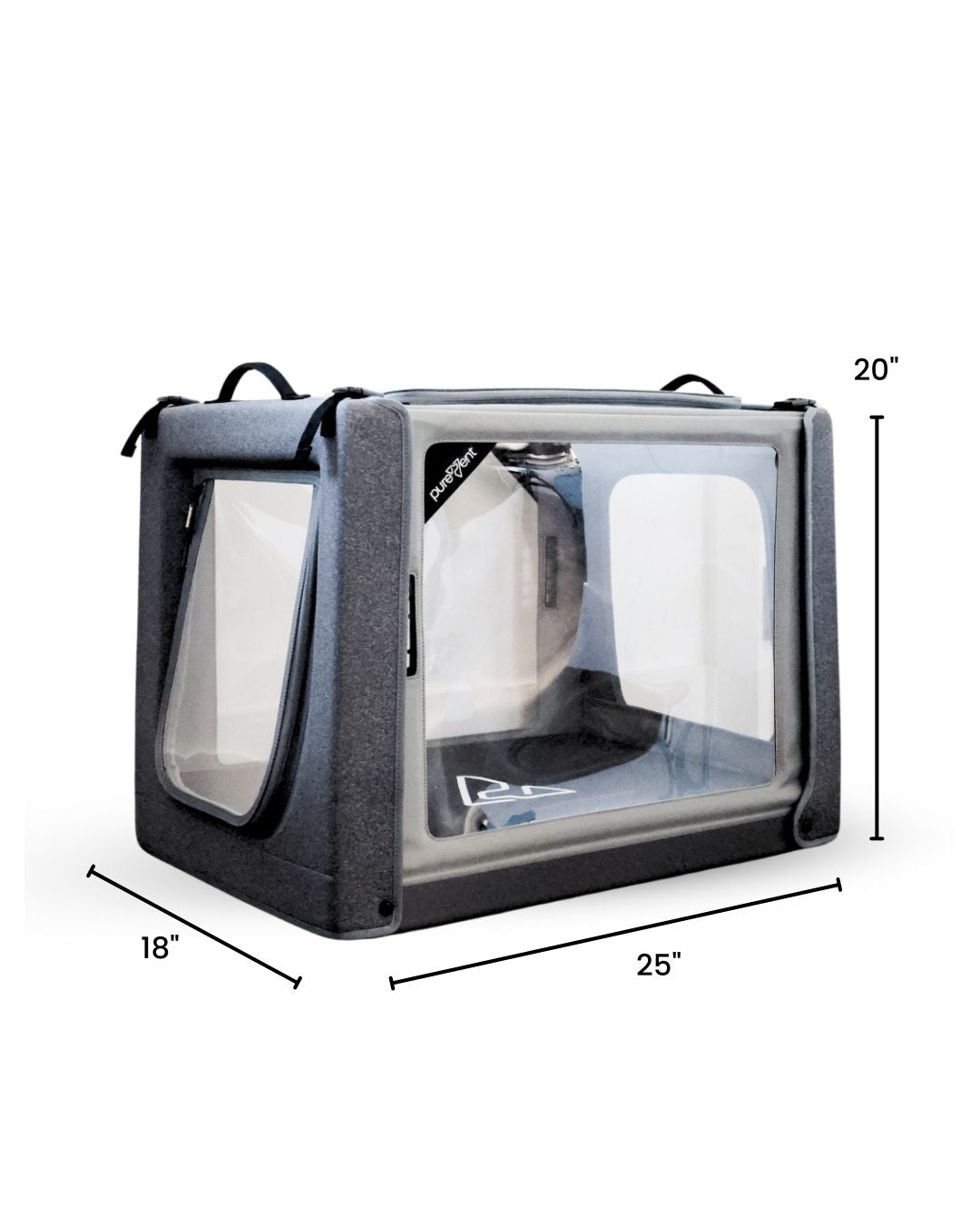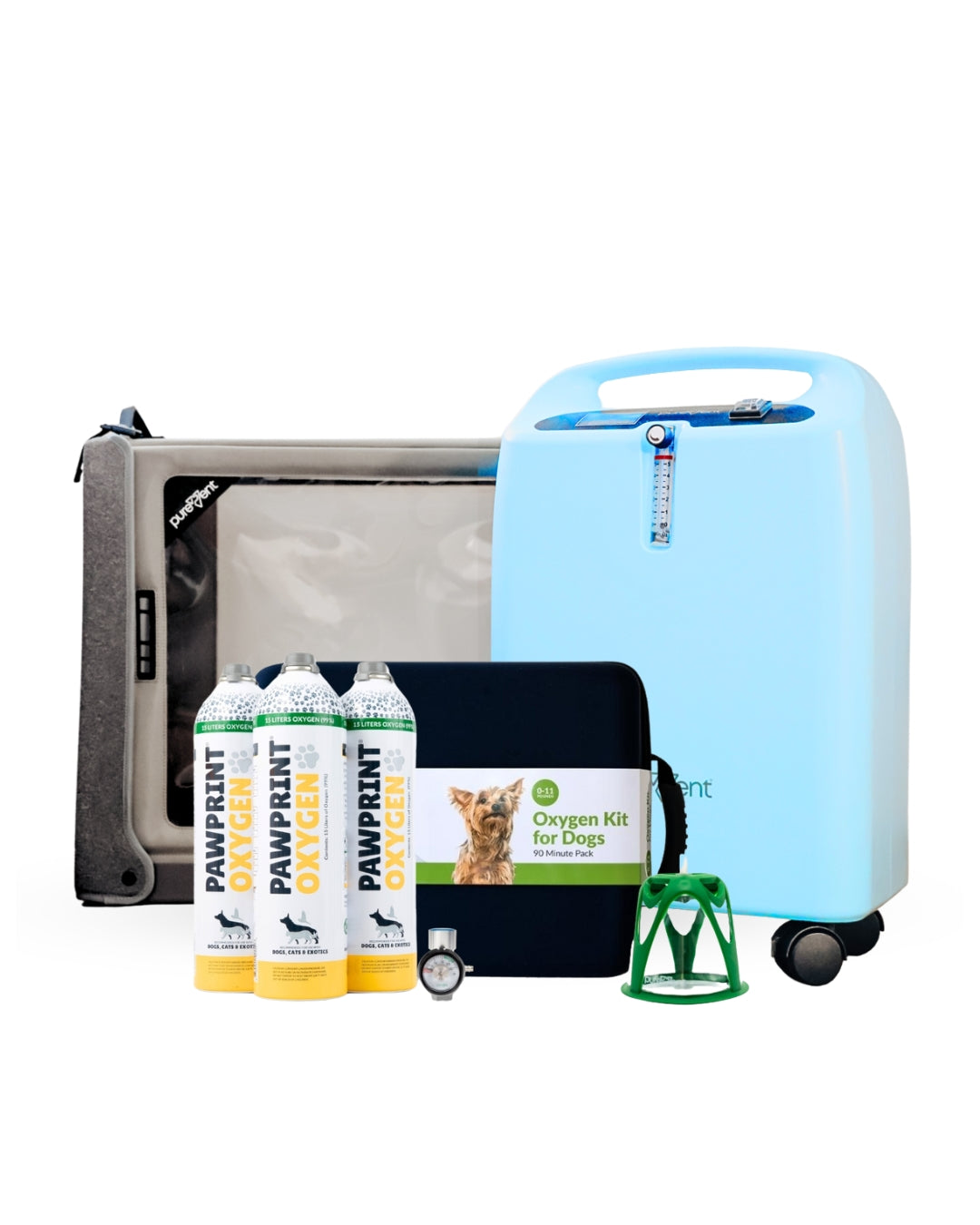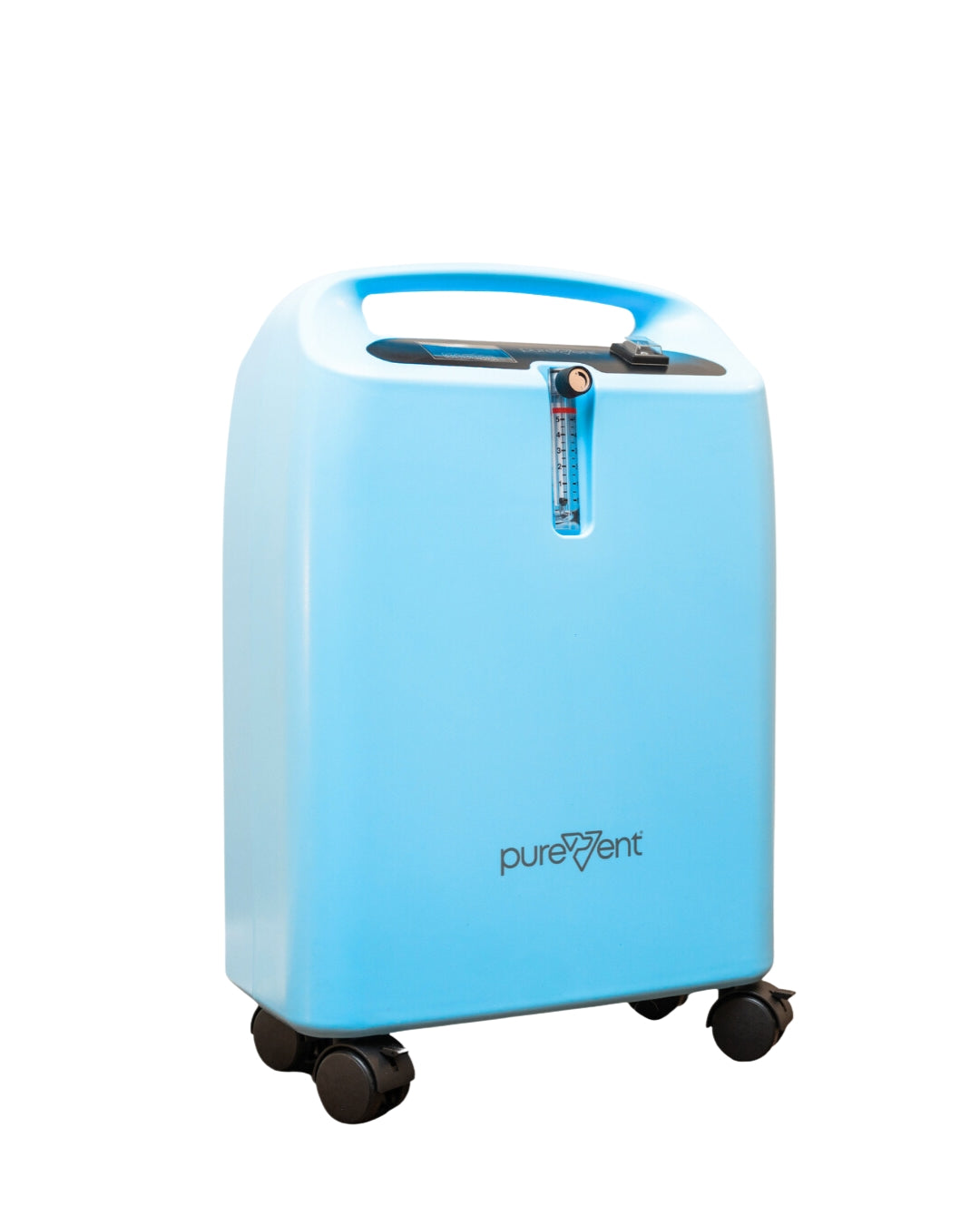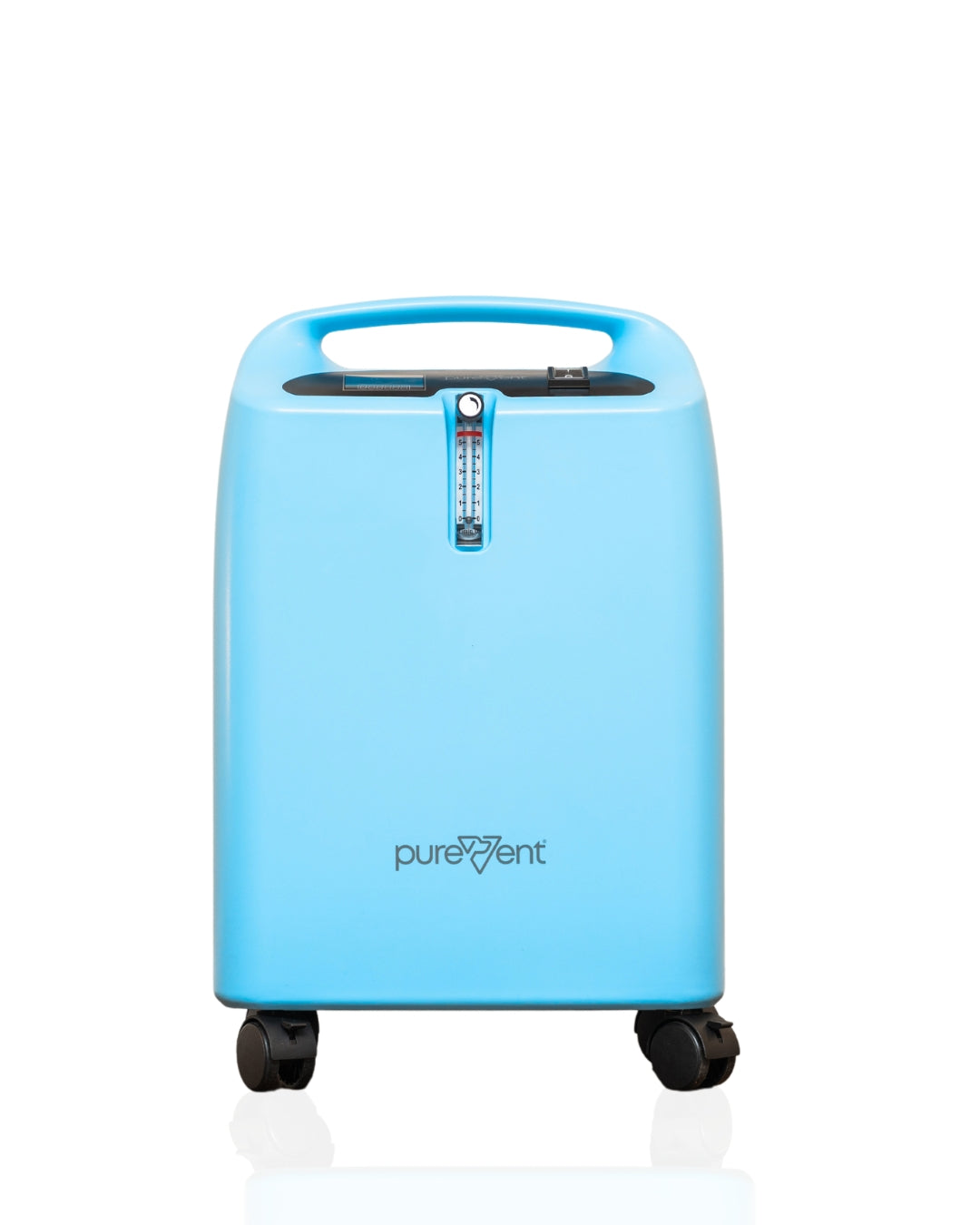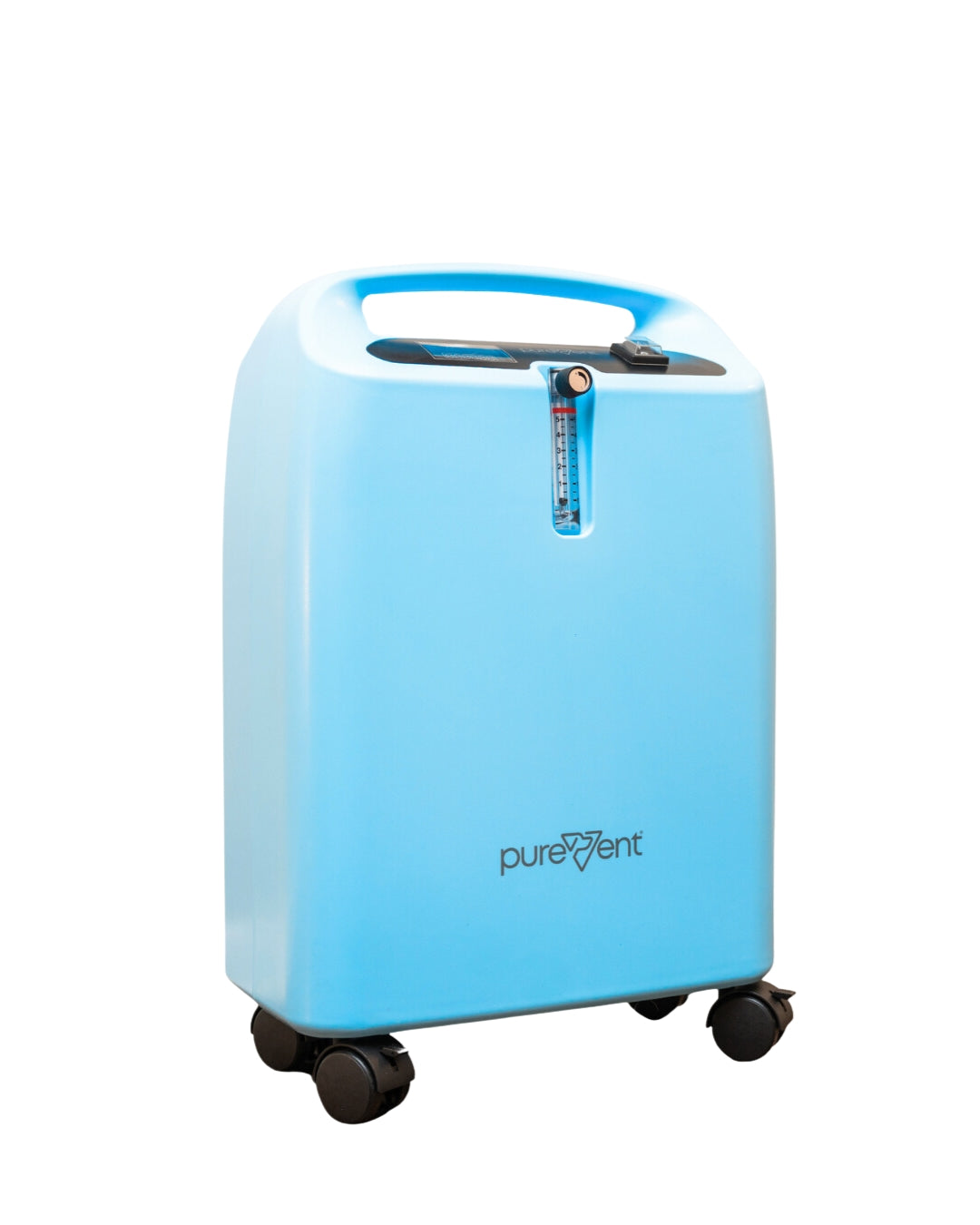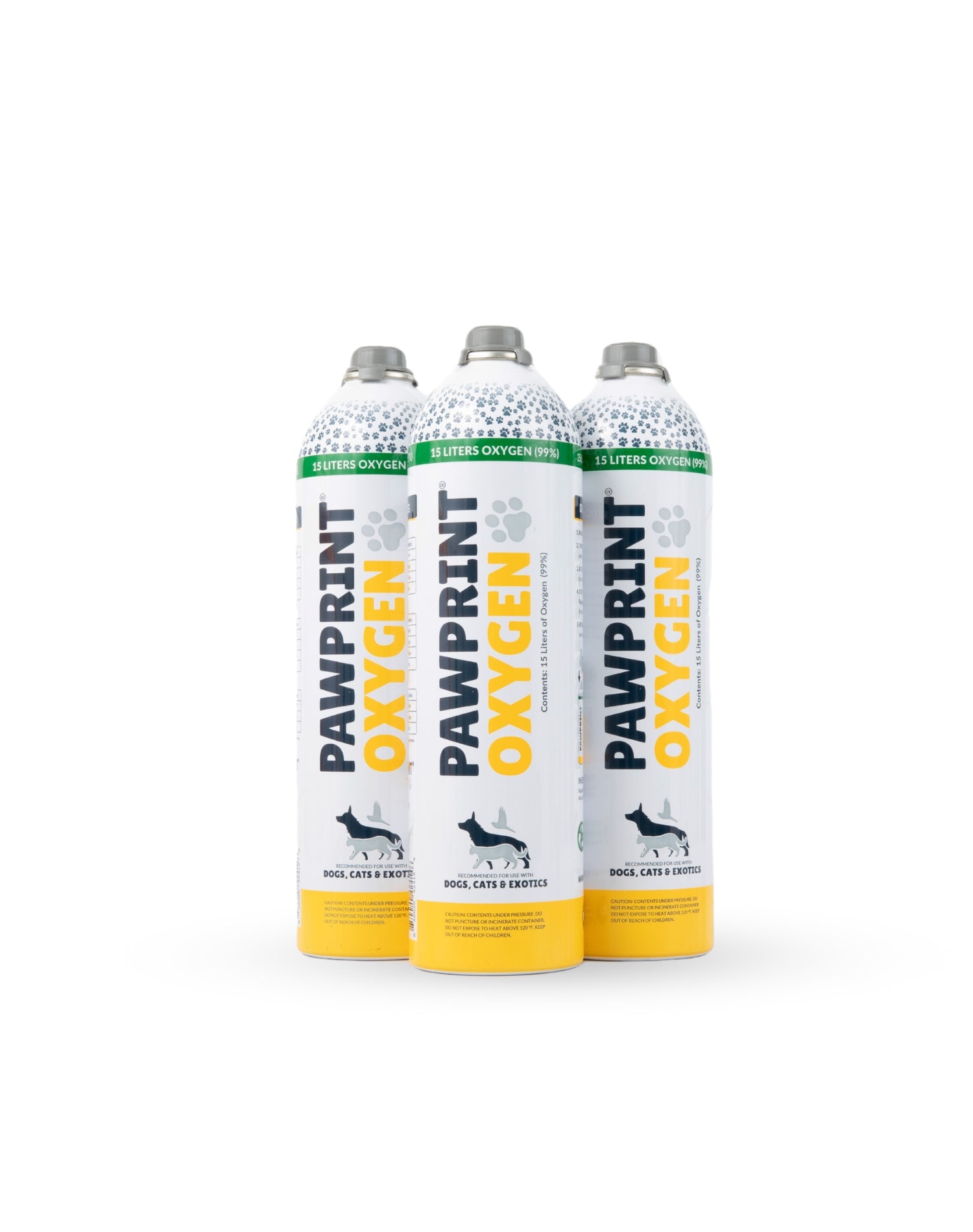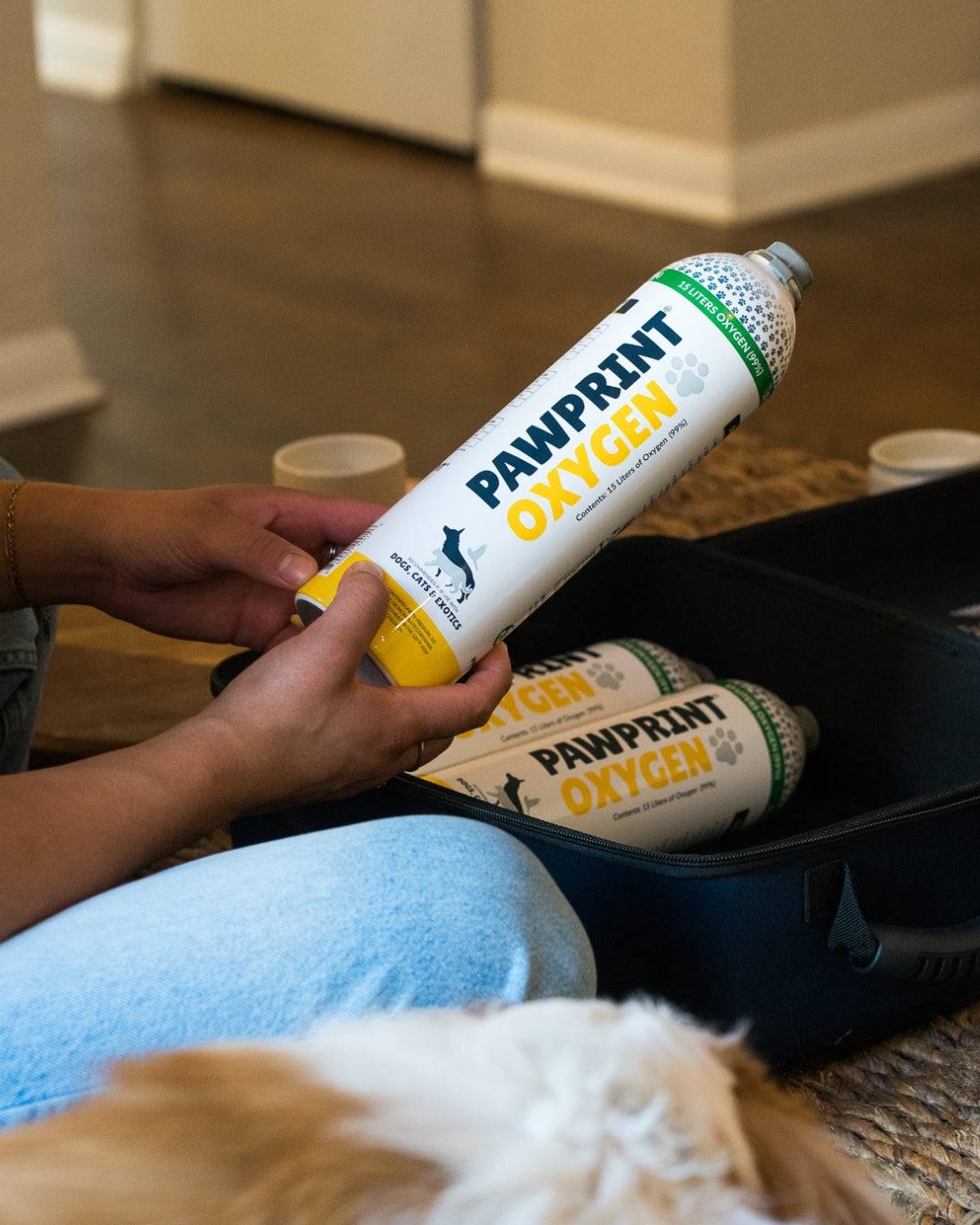In recent years, home oxygen therapy for pets has seen a significant rise in use, offering a crucial option for dogs suffering from respiratory conditions. Just like in humans, oxygen therapy helps dogs breathe easier and improves their quality of life, particularly for those with chronic or acute conditions.
Dogs with congestive heart failure, chronic bronchitis, collapsed trachea, and pulmonary hypertension are among the most common candidates for this treatment. While any dog may require oxygen support in critical moments, certain breeds are genetically predisposed to conditions that make oxygen therapy more likely.
In this article, we’ll explore which dog breeds most frequently use oxygen at home and why.
Table of content
Brachycephalic Breeds (Short-Nosed Dogs) Using Oxygen
Brachycephalic breeds, often known for their adorable flat faces and short noses, are particularly prone to respiratory issues. Their distinct facial structure, which includes a shortened skull, narrowed nasal passages, and elongated soft palate, can make breathing more difficult. This predisposes them to a variety of conditions that may require oxygen therapy.
One of the most common issues faced by these breeds is Brachycephalic Obstructive Airway Syndrome (BOAS), a group of anatomical abnormalities that obstruct airflow and cause labored breathing. Additionally, brachycephalic dogs are at a higher risk for congestive heart failure (CHF), pulmonary hypertension, and respiratory distress due to heat or exercise, making their breathing problems even more severe.
Dog Oxygen Rescue Kit
Our Oxygen Rescue Kits are designed to help your dog exactly when they need it. You can administer on-the-spot oxygen or oxygen in transport while on your way to emergency care. Dogs needing this rescue kit would likely suffer from more acute health conditions like seizures or be in a high-risk category that you'd like to keep a kit on hand to transport them with.
The following breeds often face respiratory challenges:
-
Shih Tzus: Their compact airways and tendency toward heart issues make them frequent candidates for oxygen therapy.
-
French Bulldogs: Prone to BOAS and respiratory distress, they commonly benefit from home oxygen treatment, especially in severe cases.
-
Pugs: Their signature short snout and soft palate issues often lead to breathing difficulties, requiring oxygen therapy for relief.
-
English Bulldogs: With a combination of BOAS and heart-related conditions, oxygen therapy can be critical for managing their respiratory struggles.
-
Boston Terriers: Boston Terriers face significant risks related to BOAS and heart disease.
Oxygen therapy provides immediate relief by delivering concentrated oxygen directly to the dog’s lungs, easing the strain on their respiratory system. This support helps maintain proper oxygen levels, reducing respiratory distress and improving their overall comfort and quality of life. For brachycephalic breeds, access to oxygen therapy at home can be vital during respiratory episodes, ensuring they can breathe more easily when they need it most.

Small and Toy Breeds Using Oxygen
Small and toy dog breeds, while often beloved for their tiny size and big personalities, are unfortunately more susceptible to certain health conditions that can affect their ability to breathe. Heart-related issues, like congestive heart failure (CHF), and structural problems, such as a collapsing trachea, are common in these breeds due to their small body size and fragile anatomy. These conditions can lead to difficulty breathing, frequent coughing, and oxygen deprivation, making oxygen therapy an important option for managing their symptoms at home.
Congestive heart failure is particularly prevalent in small breeds because their hearts may struggle to efficiently pump blood, leading to fluid buildup in the lungs. This can make breathing more difficult and can cause severe respiratory distress. Collapsing trachea, a condition where the windpipe weakens and collapses during inhalation, is another frequent issue for these dogs, causing chronic coughing and labored breathing.
The following small and toy breeds are commonly affected by these conditions:
-
Chihuahuas : Prone to both CHF and collapsing trachea, Chihuahuas often require supplemental oxygen to manage episodes of respiratory distress . This is the most common breed we help at Pawprint Oxygen.
-
Yorkshire Terriers : With a high risk of developing a collapsing trachea, Yorkies can greatly benefit from oxygen therapy when their condition worsens.
-
Pomeranians : Their delicate respiratory systems make them prone to both heart issues and collapsing trachea, and oxygen therapy can provide essential relief.
-
Maltese : Frequently experiencing CHF and other heart problems, Maltese dogs may require oxygen support to help with breathing difficulties.
-
Cavalier King Charles Spaniels : Known for their predisposition to mitral valve disease, which leads to CHF, these dogs often need oxygen therapy to support their respiratory function.
Oxygen therapy for these small breeds helps by delivering a high concentration of oxygen, easing the burden on their heart and lungs.
This treatment can alleviate symptoms during flare-ups, improve oxygen saturation levels, and allow these dogs to breathe more comfortably. For dogs with collapsing trachea, oxygen therapy helps reduce the strain on their airways, providing much-needed relief during times of respiratory stress.

Senior Dogs Using Oxygen
As dogs age, they become more susceptible to a variety of health issues, particularly respiratory and cardiac problems. Senior dogs, regardless of breed, often develop conditions such as laryngeal paralysis , congestive heart failure (CHF), and chronic bronchitis, which can severely impact their ability to breathe. These issues are typically related to the natural aging process rather than any specific genetic predisposition, making older dogs’ frequent candidates for home oxygen therapy.
Laryngeal paralysis, where the muscles that control the larynx weaken, causes difficulty in breathing and noisy respiration, especially during physical exertion or stress. Cardiac issues, such as CHF, can also emerge in senior dogs as their hearts become less efficient over time, leading to fluid buildup in the lungs and subsequent breathing difficulties. Both conditions can leave dogs gasping for breath, which is where oxygen therapy comes in.
While these conditions can affect any aging dog, larger breeds are particularly prone to developing heart and lung problems. Some of the most common large-breed seniors requiring oxygen therapy include:
-
Golden Retrievers : With age, Goldens often face heart problems like CHF and certain cancers, which may necessitate oxygen therapy to manage their respiratory symptoms.
-
Labrador Retrievers : Prone to laryngeal paralysis and heart disease as they age, Labs can benefit greatly from oxygen support during breathing crises.
-
Dachshunds : Although a smaller breed, Dachshunds frequently develop heart conditions like CHF in their senior years, requiring oxygen therapy for relief.
-
Poodles : Prone to both cardiac issues and respiratory diseases like chronic bronchitis. Aging Poodles often need oxygen therapy to help maintain adequate oxygen levels.
Oxygen therapy is an effective way to support senior dogs with these age-related conditions. It provides a much-needed boost to their respiratory function by delivering concentrated oxygen directly into their lungs, helping them breathe more easily and reducing the strain on their heart and lungs.
For senior dogs experiencing sudden respiratory distress or chronic issues, oxygen therapy can be a critical part of their care, improving their comfort and quality of life in their golden years.
Using data points we collect from orders at Pawprint Oxygen, the most common age range for dogs utilizing Oxygen Therapy begins peaks at age 12.

Pet Oxygen Chamber
The Buster ICU Pet Oxygen Cage is a revolutionary product designed for safe and easy administration of oxygen therapy to pets. Featuring a unique Venturi system, it provides the optimal level of oxygen and disperses carbon dioxide, heat, and humidity, ensuring comfort and safety for your pet.
This is the same Oxygen Chamber trusted by thousands of Veterinary Hospitals. Oxygen Chamber must be paired with an Oxygen source (5 or 10 L Concentrator). Made with high-quality materials, it’s durable for everyday veterinary use and protects pets from external elements. Ideal for clinics, hospitals, and home use.
When Should You Consider Oxygen Therapy for Your Dog?
Oxygen therapy can be crucial for dogs struggling with respiratory issues but knowing when to seek this intervention is also important. Below are some signs and conditions to watch for and can help you decide when you should consider starting oxygen therapy for your dog.
5 Signs That a Dog May Benefit from Oxygen Therapy
Oxygen therapy is typically recommended when a dog shows symptoms of difficulty breathing or inadequate oxygen levels in the body. Common signs include:
-
Labored breathing : A dog may appear to be panting excessively or taking deep, rapid breaths.
-
Cyanosis : Bluish discoloration of the gums, tongue, or other mucous membranes indicates that oxygen levels in the blood are dangerously low.
-
Lethargy and weakness : If your dog seems unusually tired, weak, or unable to engage in physical activity, this could signal oxygen deprivation.
-
Coughing or wheezing : Persistent coughing or wheezing could indicate that your dog’s respiratory system is struggling to maintain oxygen levels.
-
Increased heart rate or distress : If your dog appears anxious or is showing signs of elevated heart rate, this can be a sign that their body is compensating for a lack of oxygen.
If your dog is experiencing any of these symptoms, especially in combination, it's time to consult your veterinarian about oxygen therapy.
Conditions In Dogs Where Oxygen Therapy Is Beneficial
Oxygen therapy isn’t just for emergencies; it can also be beneficial for managing chronic conditions. Some of the most common conditions where oxygen therapy plays a vital role include:
-
Congestive Heart Failure (CHF) : Dogs with CHF often struggle with fluid accumulation in the lungs, leading to poor oxygen exchange. Oxygen therapy helps relieve symptoms by providing the necessary oxygen for proper circulation and breathing.
-
Collapsed Trachea : Small breed dogs are particularly prone to this condition, where the trachea becomes weak and collapses during breathing. This results in airway obstruction and labored breathing, and oxygen therapy helps maintain proper oxygen levels during flare-ups.
-
Pulmonary Hypertension : High blood pressure in the lungs reduces oxygen delivery to the bloodstream. Oxygen therapy is vital in helping these dogs maintain oxygenation, especially during activity or stress.
-
Acute respiratory distress : Sudden-onset respiratory issues due to trauma, infection, or allergic reactions can be stabilized with the use of oxygen therapy, buying time for further veterinary treatment.
Whether your dog has a chronic condition or is experiencing an acute respiratory crisis, oxygen therapy can be a critical component of their care. Early intervention can greatly improve comfort and outcomes, giving your dog the oxygen they need to breathe more easily and feel better.
How Oxygen Therapy For Dogs at Home Can Improve Quality of Life
For dogs with chronic or acute respiratory conditions, having access to oxygen therapy at home can be transformative. Oxygen therapy doesn’t just help manage symptoms; it can drastically improve your dog’s comfort, activity levels, and overall quality of life.
The Benefits of Portable Oxygen Canisters for On-the-Go or Emergencies
One of the greatest advantages of portable oxygen canisters is their ability to provide quick access to oxygen in emergency situations or while you're on the move. Whether you're taking your dog on a road trip, visiting the vet, or managing an unexpected health flare-up, these portable canisters ensure that oxygen is always within reach.
For dogs with conditions like congestive heart failure (CHF) or collapsed trachea, where sudden respiratory distress can occur, having a portable oxygen solution can bring peace of mind. These canisters are lightweight, easy to use, and can provide immediate relief when your dog needs it most, allowing for more active lifestyles without the constant worry of emergencies.
Can I refill my canister after use?
Oxygen canisters cannot be refilled. Please recycle your empty canisters. You can reorder canisters at any time!
What Is The Shelf Life On The Oxygen Canisters?
We have a two-year shelf life on our Oxygen Canisters. This shelf life is for the seal on the Oxygen Canister itself, not the oxygen.
Store canisters in a cool, dry place and if the seal is not tampered with, the oxygen will stay in the canister.
How long does each oxygen canister last?
Pawprint Oxygen Canisters can last up to 30 minutes. How long the canisters last is dependent on the flow rate that you’re using.
The flow rate is the “dosage” of the oxygen drug and determines the rate at which the oxygen gas leaves the canister.
Your Portable Oxygen Kit will include a regulator that is pre-set to the flow rate dictated by the weight range best for your pet. If you did not purchase a kit, and need a regulator, they can be purchased separately.
These are the durations that the canister will last for each of the flow rates:
0.5 Liters per minute: 30 minutes
1.0 Liters per minute: 15 minutes
2.0 Liters per minute: 7.5 minutes
3.0 Liters per minute: 5 minutes
The Role of Oxygen Concentrators and Chambers for Dogs At Home
For long-term management of chronic conditions, home oxygen concentrators offer a more stable solution. Devices like the Pure 5 Oxygen Concentrator provide continuous oxygen supply to dogs with ongoing respiratory issues, such as pulmonary hypertension or chronic bronchitis. These concentrators are designed to be low-maintenance and cost-effective, offering a constant flow of oxygen without the need to refill heavy oxygen tanks.
Oxygen therapy at home can help improve your dog’s energy levels, reduce symptoms like coughing or wheezing, and allow for more restful sleep. By stabilizing their oxygen levels, concentrators help prevent further deterioration and allow your dog to enjoy a higher quality of life, even when living with a serious condition.
Pet Oxygen Concentrator - PureVent 5L
The PureVent 5L Oxygen Concentrator plugs into a wall outlet (120V) and concentrates oxygen from room air, providing high purity oxygen gas (>90%). The Oxygen Concentrator provides continuous flow oxygen (does not need to be refilled) and is recommended for pets requiring extended oxygen therapy. Use the Oxygen Concentrator with a PureVent Pet Oxygen Mask or an Oxygen Cage.

Convenience and Accessibility with Pawprint Oxygen
With Pawprint Oxygen, pet owners can access both portable oxygen canisters and home oxygen concentrators, making it easier than ever to provide oxygen therapy for their dogs. Our products are designed with convenience and accessibility in mind, so you can deliver oxygen therapy to your dog anytime, anywhere.
Pawprint Oxygen’s comprehensive service ensures that you have the right tools at your fingertips, whether you're managing chronic conditions or dealing with unexpected respiratory events. From portable canisters for emergencies to oxygen concentrators for home use, we offer reliable solutions that give your pet a better chance at living a comfortable, active life.
Helping Your Dog Live a Healthy, Active Life
Dog breeds such as Bulldogs, Pugs, Boxers, and Cavalier King Charles Spaniels are some of the most common users of oxygen therapy, given their predisposition to respiratory and cardiac conditions like brachycephalic airway syndrome, congestive heart failure, and collapsed trachea. These breeds, along with many others, can benefit significantly from timely oxygen therapy to help manage their symptoms and improve their overall quality of life.
Early intervention is critical when managing respiratory and cardiac conditions in dogs. By recognizing the signs of distress and understanding the importance of oxygen therapy, pet owners can prevent their dogs from enduring unnecessary suffering and help them lead more comfortable, active lives. Oxygen therapy, whether administered through portable canisters or home oxygen concentrators, can make a world of difference in managing your dog’s health.
If your dog is showing signs of respiratory distress or has been diagnosed with a condition like congestive heart failure, collapsed trachea, or pulmonary hypertension, it’s essential to consult with your veterinarian. They can determine if oxygen therapy is the right course of action for your dog and guide you through the best solutions available.
